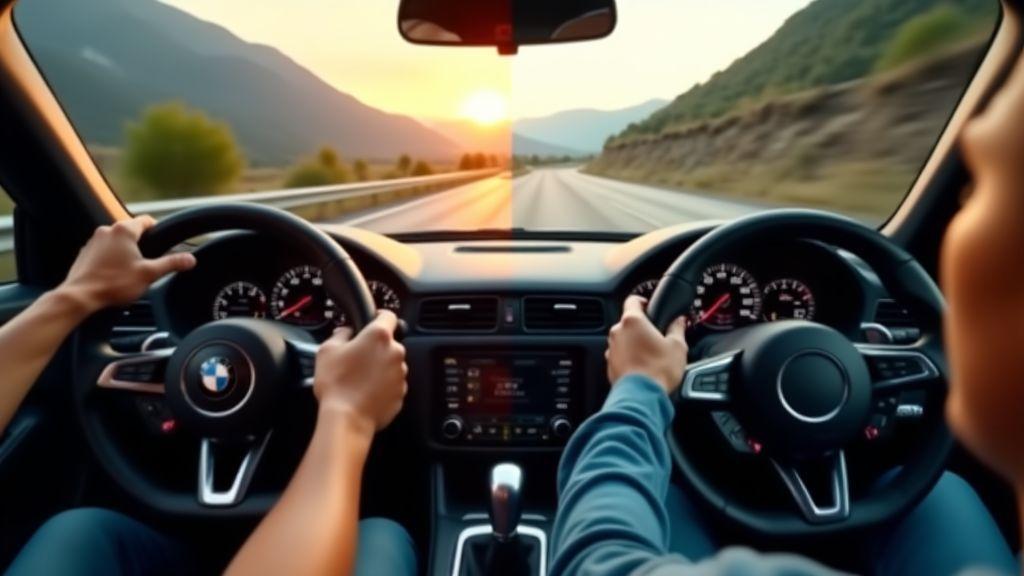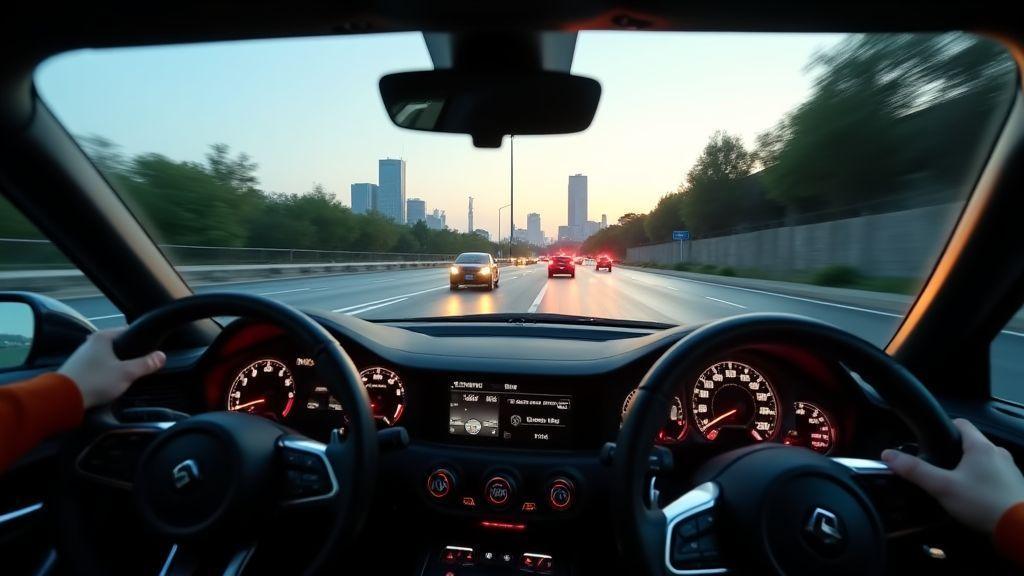Manual vs Automatic Sports Cars — Which Is Better?
You will get a clear look at driving feel and control and why a stick can give you more gear control. Learn how handling, cornering, and shift timing change with a manual versus an automatic. See the pros and cons for driver engagement and the real impact on cost, fuel efficiency, maintenance, and resale value. Compare modern technology—from daily traffic ease to high‑performance dual‑clutch systems—and find which use case fits your needs. Manual vs Automatic Sports Cars — Which Is Better? is the central question this guide answers.
Key Takeaway
- You get more control with a manual.
- You find automatics easier in traffic.
- You get faster, smoother shifts with modern automatics.
- You may save on fuel and repairs depending on the car.
- Choose based on your driving habits and goals.

Driving feel and control with manual vs automatic sports cars
You feel every decision in a manual sports car. Your hand and foot coordinate like a small orchestra—lift the clutch, pick a gear, and the car answers with direct feedback that helps you place the nose and manage speed precisely. Learn more about how manual transmissions actually work.
Automatic sports cars trade tactile input for speed and repeatability. Modern dual‑clutch and fast‑shifting automatics change gears in fractions of a second, shaving tenths off lap times and keeping the engine in the sweet spot without your hands tied to a lever.
Which you prefer often comes down to mood and mission. If you want a hands‑on drive, stick shifts pull you in. If you want consistent performance or heavy‑traffic comfort, automatics keep stress low. Manual vs Automatic Sports Cars — Which Is Better? It depends on whether you crave control or pure pace.
Why manual driving experience gives more gear control
Manual gearboxes let you pick the exact ratio you want. You decide when to hold a gear, when to drop two, and when to blip the throttle—affecting acceleration, engine braking, and how the car sits during cornering. Using the clutch and revs to shape launches and downshifts (heel‑to‑toe, rev‑matching) gives skilled drivers more influence over the car’s behavior and a deeper sense of reward.
How handling, cornering, and shift timing change with manual vs automatic
Shifting affects weight transfer. In a manual, a downshift before a turn adds engine braking and can tuck the nose in, letting you control the rhythm of entry and exit. Automatics, especially modern units, can blip and hold shifts for you, keeping power flowing during changes and often changing faster than a human—yielding more consistent exits but less personal touch.
| Aspect | Manual | Automatic |
|---|---|---|
| Shift control | You choose exact gear and timing | Computer optimizes timing and RPM |
| Consistency | Driver-dependent; varies | Very consistent; repeatable shifts |
| Shift speed | Slower than modern DCT in most cases | Faster shifts; quick torque delivery |
| Driver engagement | High; tactile and hands-on | Lower; focus moves to strategy and steering |
Stick shift pros and cons for driver engagement
A stick shift draws you into the act of driving: managing revs, gears, and clutch feel. That involvement rewards skill but demands focus in traffic and on long drives.
Pros:
- Greater control over gear selection and engine braking
- Stronger emotional connection and learning satisfaction
- Simpler and lighter mechanical feel in many cars
Cons:
- Slower shift speed than top automatics in most modern sports cars
- More fatigue in stop‑and‑go traffic
- Steeper learning curve for precise heel‑toe and rev‑matching
Manual vs Automatic Sports Cars — Which Is Better? for cost, fuel efficiency, and resale value
You want a sports car that thrills and makes sense for your wallet. Manuals often cost less up front used, and clutch repairs are predictable. Automatics usually carry a higher sticker or trade‑in value because more buyers prefer them; dual‑clutch gearboxes and paddle autos can push prices higher. Think of a manual as a simple wrench, an automatic as a power tool with more parts to service.
Fuel use ties directly to how you drive. Skilled rev‑matching and early shifting can make manuals efficient on the highway, but modern automatics with more gears or DCTs often beat older manuals in real‑world mileage—especially in city traffic where automatics keep the engine in an efficient band. For authoritative comparisons and metrics, see the official U.S. fuel economy guidance.
Resale follows buyer taste. Manuals are a shrinking slice of the market; that can make some manuals collectible, while automatics sell faster to more buyers. If you plan to flip the car, consider local demand: enthusiast communities may favor manuals; commuters favor automatics.
| Aspect | Manual | Automatic |
|---|---|---|
| Typical purchase price (used) | Often lower | Often higher |
| Fuel performance (modern) | Efficient with skilled shifting | Often equal or better due to tech |
| Maintenance cost (typical) | Lower routine cost; clutch service when needed | Higher for major gearbox work |
| Resale dynamics | Niche demand; selective premiums | Broader market; quicker sales |
Fuel efficiency and what it means for you
Manuals used to be the mileage champ because you control shift points. If your trips are mostly highway and you enjoy driving, a manual can reward you with good MPG. If you face heavy commuting, modern automatics or DCTs usually offer better real‑world fuel economy thanks to more gears and smarter control.
Maintenance costs: manual transmissions vs automatics
Manuals are simpler and cheaper to fix. Clutch jobs are the most common expense and are predictable; gearbox internals in manuals often last the car’s life if not abused. Automatics can be pricier when things go wrong—rebuilds and valve body repairs cost more than a clutch swap—but proper fluid changes and scheduled service extend life.
Tips:
- Check shift fluid and service intervals regularly to extend transmission life.
- See vehicle maintenance and repair guidance resources for typical service intervals and cost expectations.
- Avoid riding the clutch or harsh launches to prevent early wear.
- For automatics, stick to manufacturer fluid specs and change on schedule.
If you’d like personalized buying advice based on your local market and driving habits, contact our editorial team and we’ll point you toward models that match your priorities.
Resale trends
Manuals are increasingly specialty items: for iconic models or limited runs they can fetch a premium. For most buyers, automatics win on convenience and sell faster. Match your choice to how long you’ll keep the car and who you expect to sell it to.

Technology, traffic, and performance advantages of manual vs automatic sports cars
Manual vs Automatic Sports Cars — Which Is Better? From a tech perspective, manuals are simple: you control the clutch and shift lever, which can mean lighter weight and fewer failure points. Automatics use torque converters, planetary gearsets, or modern dual‑clutch systems with mechatronics, adding sensors and computers that optimize shifts for speed or efficiency. Adaptive shift maps, launch control, and integration with stability systems are automatic advantages that a manual can’t match without driver skill.
| Feature | Manual | Automatic (DCT / Modern Auto) |
|---|---|---|
| Driver control | High | Medium (paddle override) |
| Shift speed | Slower (driver dependent) | Very fast (millisecond shifts) |
| Ease in traffic | Low (fatigue) | High (convenience) |
| Weight & simplicity | Lighter, simpler | Heavier, complex electronics |
| Maintenance cost | Often lower | Can be higher, more complex |
| Engagement | Very high | Medium to high with paddles |
Automatic advantages in traffic and daily driving
Automatics reduce fatigue in stop‑and‑go city driving and often include adaptive cruise, stop‑start, and smooth low‑speed behavior—making commuting less stressful. Consistent shifts help fuel economy and reduce wear from missed revs. Many autos offer paddles or sport modes to let you grab control when you want it.
Automatic gear shifting performance and modern dual‑clutch systems
Dual‑clutch transmissions preselect the next gear and swap clutches in milliseconds, avoiding power dips during shifts and improving acceleration. On track, DCTs typically yield quicker lap times than manuals, especially with launch control. Downsides: they can be jerky at low speeds, get hot on long hard sessions, and are complex and expensive to repair. For deeper engineering explanations, see technical resources on transmission technology that cover DCT design and mechatronics.
Which is better for your use case?
Decide by use:
- Commute length and traffic frequency
- Track vs weekend driving priorities
- Maintenance budget and repair tolerance
- Desire for driver involvement and learning curve
If your daily routine is heavy traffic and long commutes, pick an automatic for comfort and consistent performance. If you crave engagement, canyon runs, or learning stick skills, a manual gives that raw connection. Consider resale, maintenance costs, and how often you’ll take the car to the track before choosing. Manual vs Automatic Sports Cars — Which Is Better? Match the gearbox to your routine—commute comfort or canyon engagement—and you won’t go far wrong.
Conclusion
You’re choosing between two clear tradeoffs: control and engagement with a manual, or convenience, consistency, and lightning‑fast shift speed with an automatic (especially modern dual‑clutch units). If you crave a hands‑on connection, precise gear and engine feel, and generally simpler long‑term maintenance, a manual rewards you—though it can tire you in heavy traffic. If your life is daily commutes, track days where lap times matter, or you value broader resale appeal, an automatic gives repeatable performance and less stress. In short: match the gearbox to your routine—commute comfort or canyon engagement—and you won’t go far wrong.
For more deep dives and buying guides, visit our homepage. For details on how we handle data and the site rules, see our privacy policy and terms of use.

